Can you spot the hidden messages inside NASA’s Artemis I Orion spacecraft?
The Artemis I spacecraft was launched from the Kennedy Space Center in mid-November on a 270,000-mile journey around the moon.
Artemis 1 mission: Relive Orion's historic journey to the moon before splashdown
Splashing down on December 11, the successful completion of the Artemis I mission paves the way for future expeditions to Mars and other destinations in the solar system.
The end of the journey of the Artemis I spacecraft around the moon brought a surprise to some space-goers that only advanced space enthusiasts could see - secret messages purposefully plastered around the Orion capsule as part of a challenge NASA described as an "Easter egg" hunt.
The hidden gems referred to by the space agency as "Easter eggs" were anything but the usual multicolored plastic shells children dawn their best Sunday attire to go searching for.
Among the data-collecting manikins, experiments and other important technology were mementos to space history, tributes and even puzzles that NASA challenged the world to spot in its sometimes rather poor-quality imagery.
The mission was not the first occasion where NASA has embedded messages in spacecrafts. Voyager 1 and 2, several Mars rovers and other historic missions have all contained mementos that range from pictures of Earth to metal from the New York 9-11 Twin Towers.
The space agency teased about capsule's "Easter eggs" for weeks but lifted the veil of secrecy on the eve of capsule’s splashdown on Earth.
Can you spot the five hidden messages around the cabin?
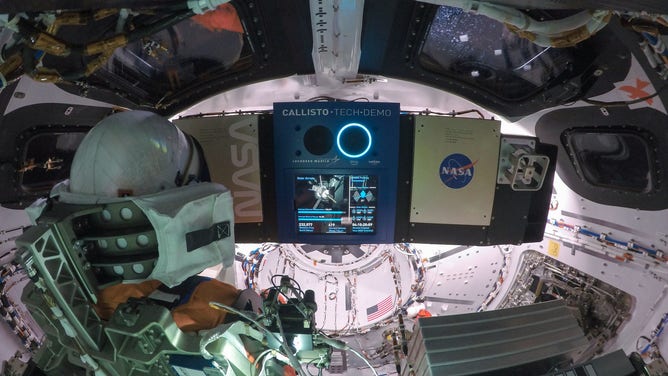
There are five hidden objects in this picture. Can you spot them?
(NASA)
NASA’S ORION SPACECRAFT OFFERS LAST BREATHTAKING VIEWS OF THE MOON AS IT BEGINS JOURNEY HOME
Item #1- Cardinal
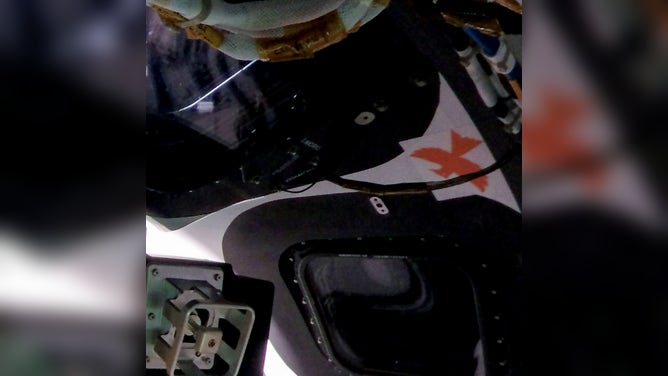
The image of a cardinal is tribute to former Orion Program manager and devout St. Louis Cardinals fan Mark Geyer.
(NASA)
Above the window of Orion’s pilot seat is an image of a red cardinal. NASA said the bird served as a tribute to former Orion Program manager Mark Geyer. Geyer passed away in 2021 and was the first program manager for spacecraft. The Indianapolis native was a devout St. Louis Cardinals fan and worked at NASA since 1994.
Item #2 - Morse code symbol
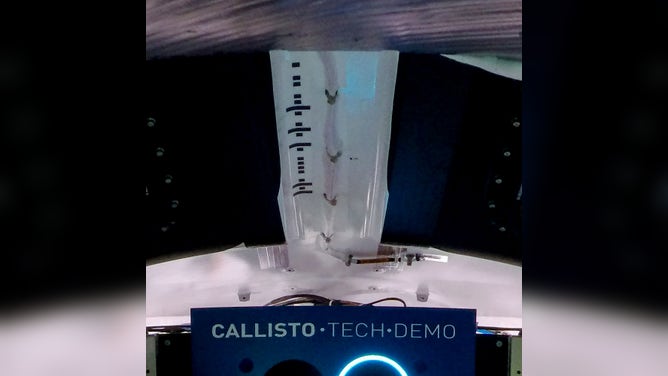
A Morse code symbol for "Charlie" commemorates Orion Deputy Program Manager Charlie Lundquist, who died in 2020.
(NASA)
Located above the voice-activated technology demonstration panel in the middle of the cabin are the symbols for "Charlie" in Morse code. NASA said the code commemorates the life of former Orion Deputy Program Manager Charlie Lundquist, who died in 2020. Lundquist started his NASA career in 1993 and was responsible for the spacecraft’s design, development and testing.
Item #3 – Country codes
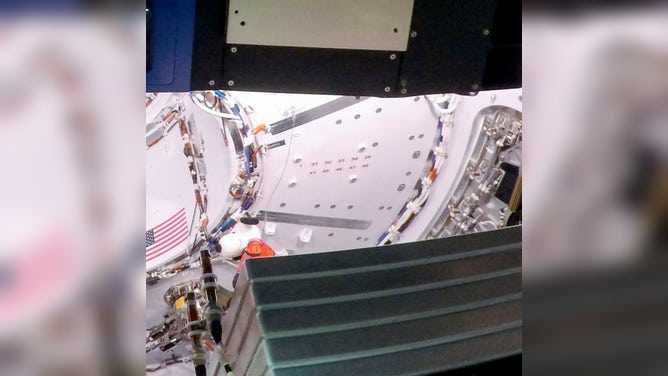
Country codes represent each country that participated in building the spacecraft’s European Service Module.
(NASA)
The effort to launch the mega moon rocket was a global effort and as a testament to nearly a dozen countries that participated building the capsule, each country’s code was placed in the cabin. The country codes can be spotted in front of the pilot’s seat, below the voice-activated technology demonstration panel. Countries include the United States, Germany, Italy, Switzerland, France, Belgium, Sweden, Denmark, Norway, Spain and the Netherlands.
NASA’S ORION SPACECRAFT BREAKS APOLLO DISTANCE RECORD FROM EARTH WHILE ORBITING THE MOON
Item #4 – Music letters
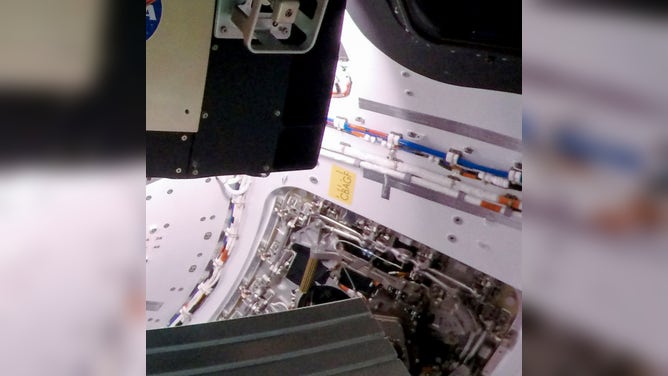
Letters "CBAGF" are notes to the song "Fly Me to the Moon"
(NASA)
On the right side of the cabin, near the pilot's seat, you can spot the letters "CBAGF" on a yellow backdrop. NASA’s says they are the music notes to Frank Sinatra’s 1964 song "Fly Me to the Moon." Many associate the musical hit with Apollo missions that took place in the 1960s and 1970s. Once Artemis I and II are deemed successful, NASA says the Artemis III mission could land astronauts on the moon as early as 2025.
Item #5 - Binary code

Binary code for the number 18 celebrates the return to the moon after Apollo 17.
(NASA)
To the right of the NASA logo, above the pilot’s seat are black and white blocks. These blocks represent the code 10010 or the number 18. NASA says the binary code honors the Apollo program and signifies the return to the moon following Apollo 17. The 1972 mission was the most recent time humans have set foot on the lunar body.
